All travelers who visit Havana have the feeling of being trapped in time, and that is precisely one of its greatest charms. Walking its streets is like enjoying a living museum and discovering its essence. That is why Old Havana is considered a hidden treasure in the heart of the city of Havana. It is a colonial jewel that takes you back in time and shows you the charm and beauty of an ancient era. But if there is something that makes Old Havana special, it is its colonial squares. Each of them tells a different story and offers a unique experience for those who visit them.
Unlike the rest of the country's colonial cities, Havana did not follow the same pattern as the other towns around a square or park. The marvelous city was structured into four main squares with different functions: social (Plaza Vieja), commercial (Plaza de San Francisco de Asís), military (Plaza de Armas) and religious (Plaza de La Catedral).
Discover the magic of the four colonial squares of Old Havana, each one has its own personality and offers a unique experience.
Plaza Vieja
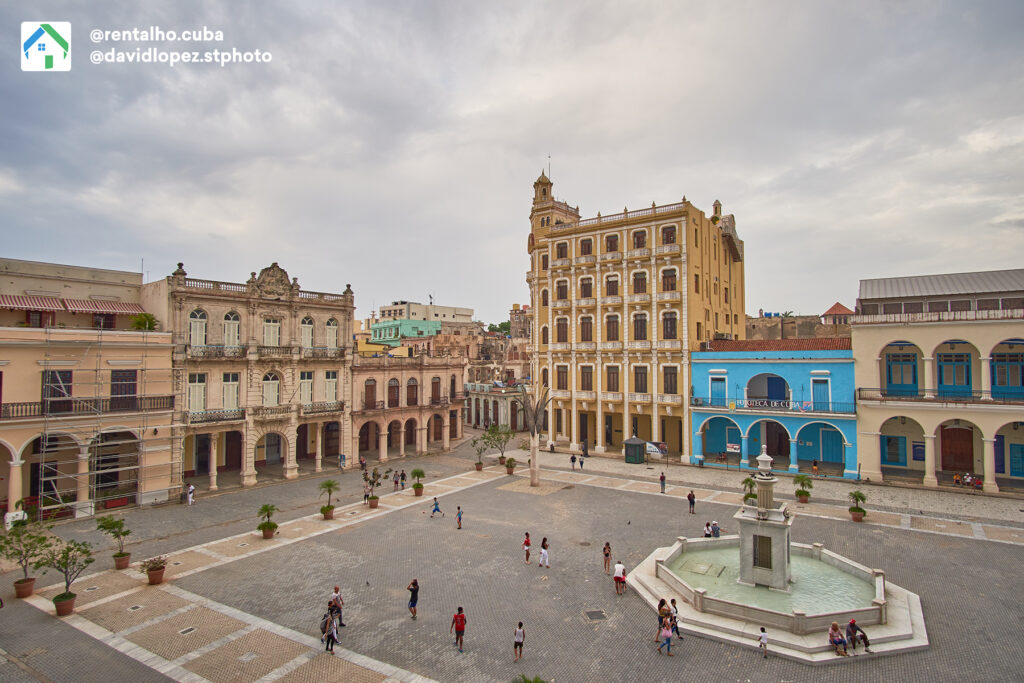
Plaza Vieja is one of the most vibrant and lively colonial squares in Old Havana. It was built in the 18th century and is known for its impressive central fountain. The square was recently restored and has many bars, restaurants and shops. It is a perfect place to enjoy a meal or a drink while enjoying the cheerful and welcoming atmosphere of Havana.
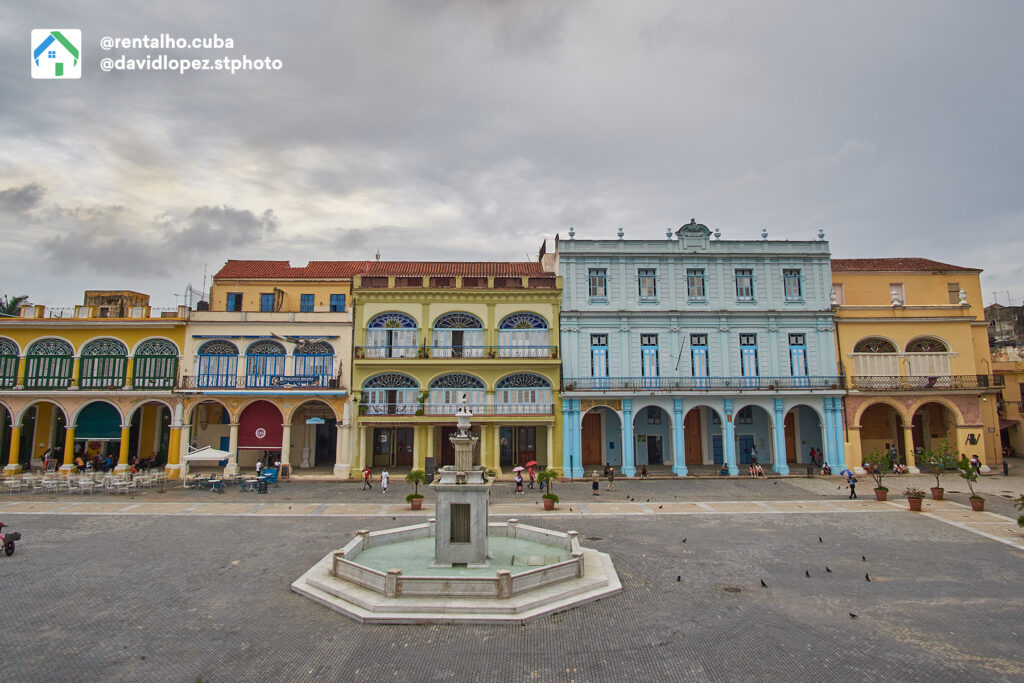
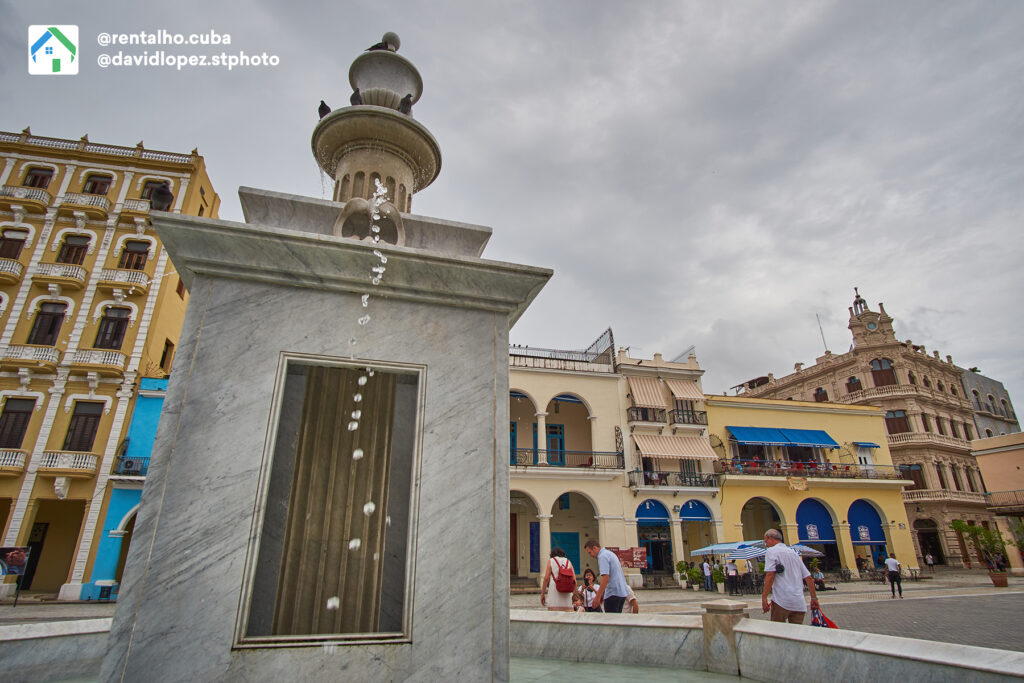
This square is recognized for its great historical, architectural and cultural value of the nation. It constitutes the first planned attempt to expand the city as a response to the urban and commercial development of Havana with transformations up to the present.
It emerged as an open space in 1559 and was used as an area for different modalities, such as a residential, commercial and recreational area. Some of the houses that border the square are an early expression of the constructions that would typify this place in Havana: two-story houses, open to the outside through portals and galleries.
Contrary to usual, no Church or administrative building is located there. However, it has some of the best exponents of Cuban eclectic architecture in its surroundings. Some of the places that you can visit around it are: The Dark Chamber (former Gómez Vila building), Las Casa de los Condes Jaruco, La Casa del Conde Lombillo, La Casa del Marqués de Casa Torres, La Casa de Don José de Arrate (Museum of the Card), the House of Beatriz Pérez Borroto (Photo Library of Cuba) and others.
Plaza de San Francisco de Asís
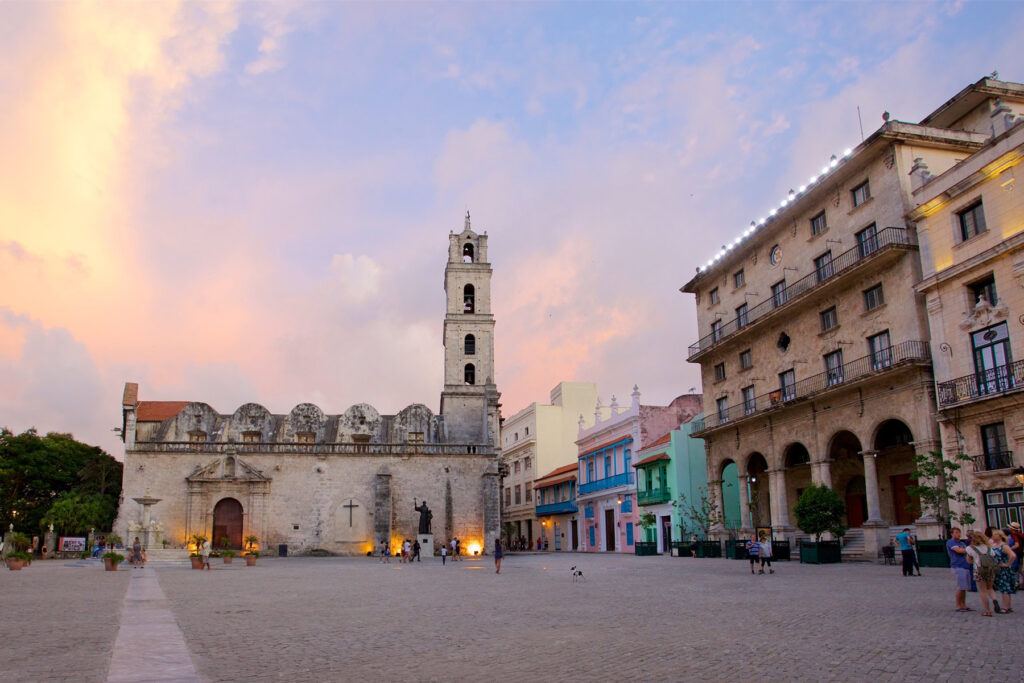
The Plaza San Francisco de Asís is a must-see place in Old Havana. Its colonial architecture makes it an ideal place to take pictures. In addition, the square is an ideal point of reference to discover many interesting places around it.
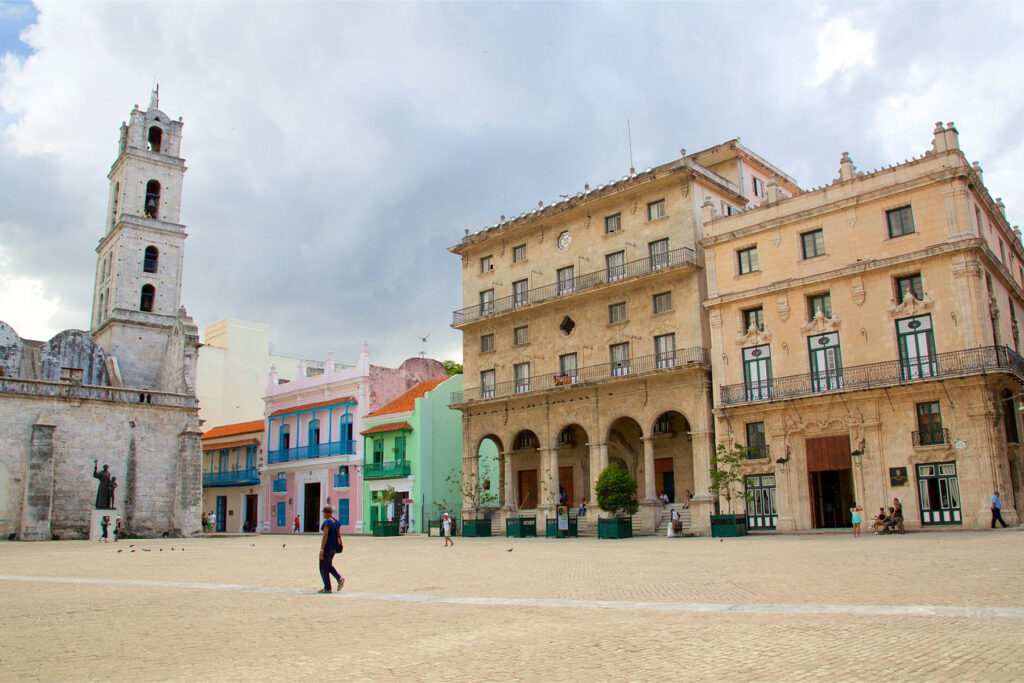
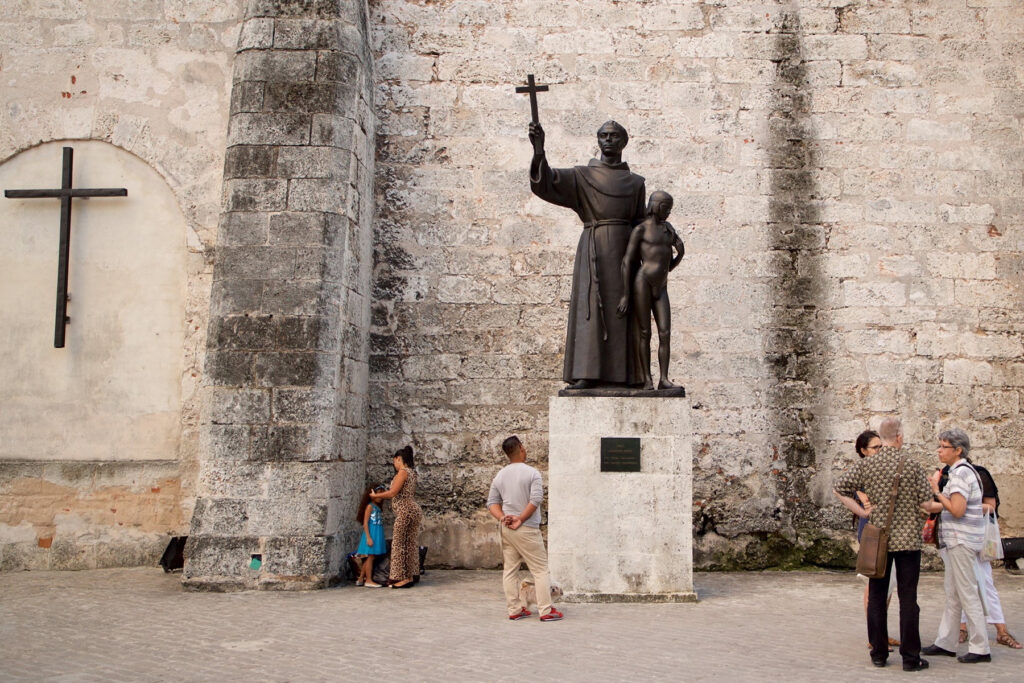
Created around 1628 by agreement of the Cabildo to serve as a water supply point for the fleets, due to its proximity to the port of Havana, it was the center of commercial activity for many years, due to its location next to the bay and the piers.
Also known as "Plaza de las Palomas", it is surrounded by several buildings and monuments that you can visit, including: The Convent of San Francisco de Asís, The Minor Basilica of San Francisco de Asís and the Museum of Sacred Art, La Fuente de los Leones, the Monument to Fray Junípero Serra, El Cruceiro, Diana de Gales Garden, La Lonja del Comercio and the Mercurio in Havana, the house of the Marqués de San Felipe y Santiago, the Garden of Mother Teresa of Calcutta, The Greek Orthodox Church, the statue of the Knight of Paris in the Convent of San Francisco and the Rum Museum.
Plaza de Armas

The Plaza de Armas is an ideal place to enjoy the tranquility and charm of Old Havana. You can relax on one of the benches in the square, surrounded by trees and flowers, while enjoying the sea breeze. You can also enjoy live music and the street artists that animate the square.
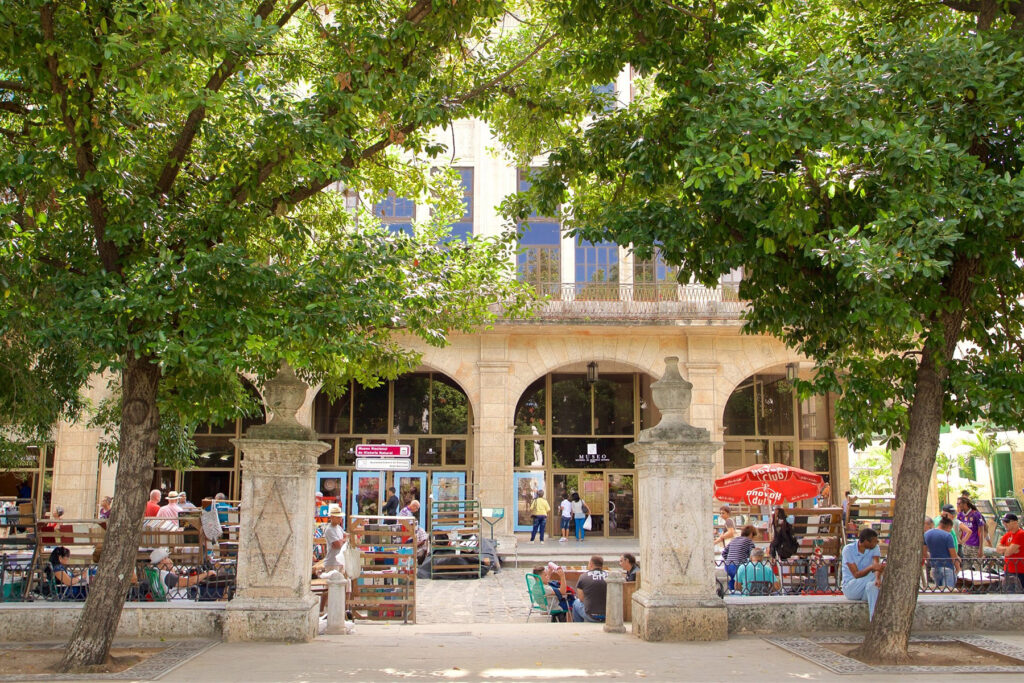
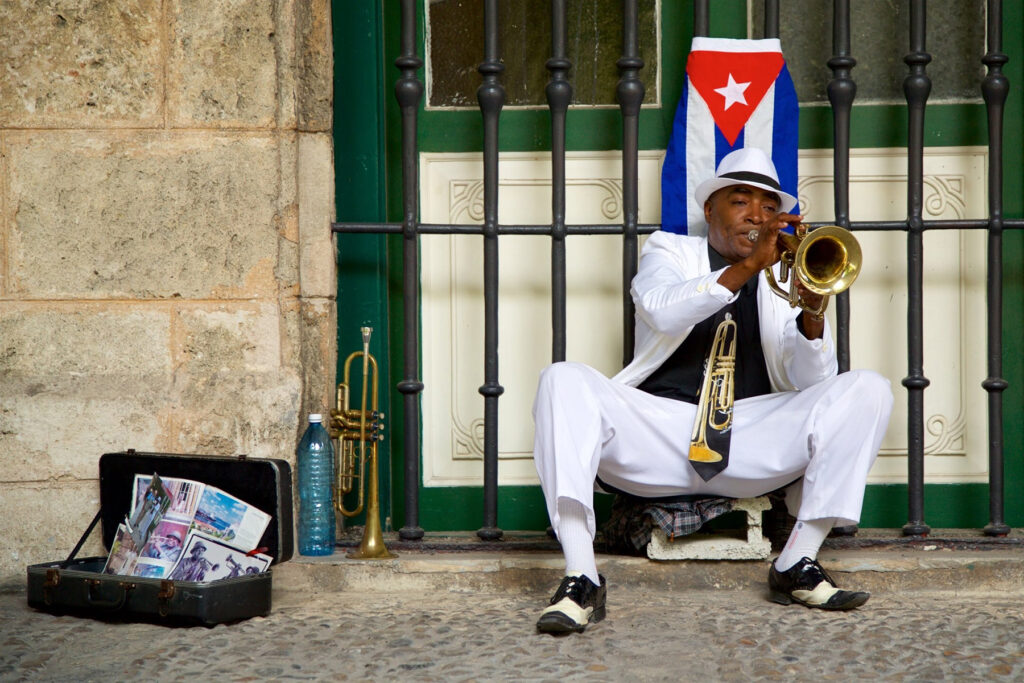
It has an extraordinary historical and architectural value. Constituted in the first third of the 16th century, it was the first of the town and from which its immediate growth was erected. In its beginnings, being associated with the grounds of the Castillo de la Fuerza, it had a predominantly military function. However, at the end of the 8th century, it stands out for its administrative hierarchy with the construction of the palaces of the General Captains and the Second Cape, buildings with a beauty that is well worth stopping to admire.
It also has a very interesting life of its own, because every day in the twinkling of an eye, in one of its cobbled side streets, an open-air shelf of old books, stamps, anachronistic objects, coins and other curiosities is set up, all linked to history. Cuban history. While you walk through it, you will be accompanied by the native soundtrack of this old side of the city: town criers, parades of musicians and stilt walkers, maracas and guitars that jump into the air livening up one of the nearby doorways.
It is currently surrounded by the following buildings: The Palace of the General Captains, The Palace of the Segundo Cabo, El Castillo de la Fuerza, El Templete, The Hotel Santa Isabel (former house of the Counts of Santovenia), the Museum of Natural History and the Rubén Martínez Villena Library (former North American embassy).
Plaza de la Catedral
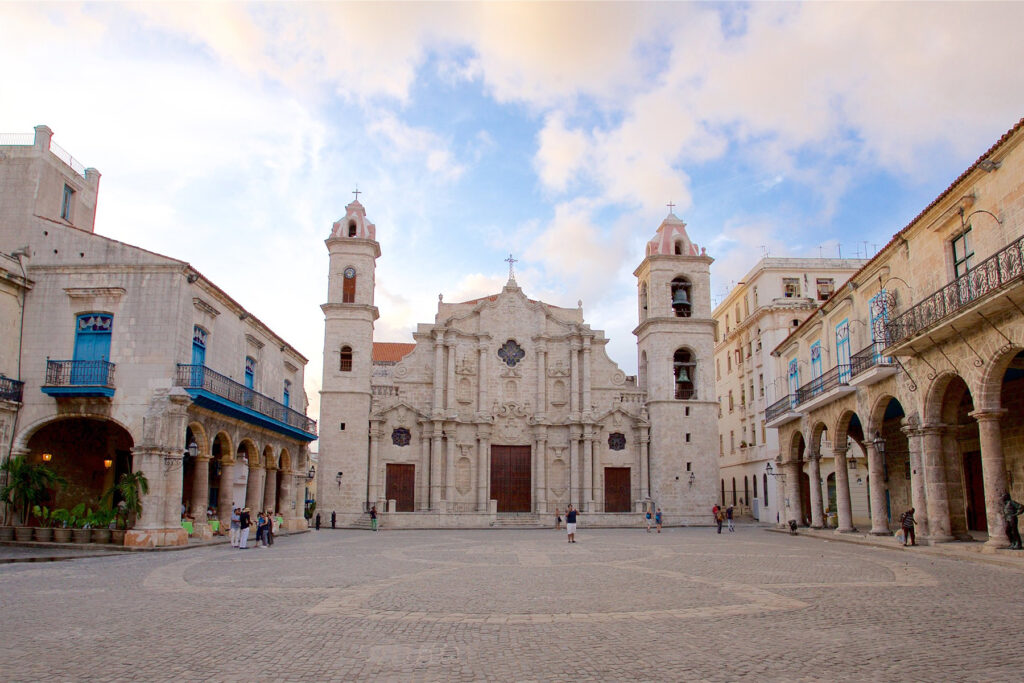
It is one of the most famous and popular sites in the Historic Center of the city and one of the most photographed places. This square is an authentic museum of the Cuban baroque, since all the buildings located in it, including the Cathedral, are from the 18th century.
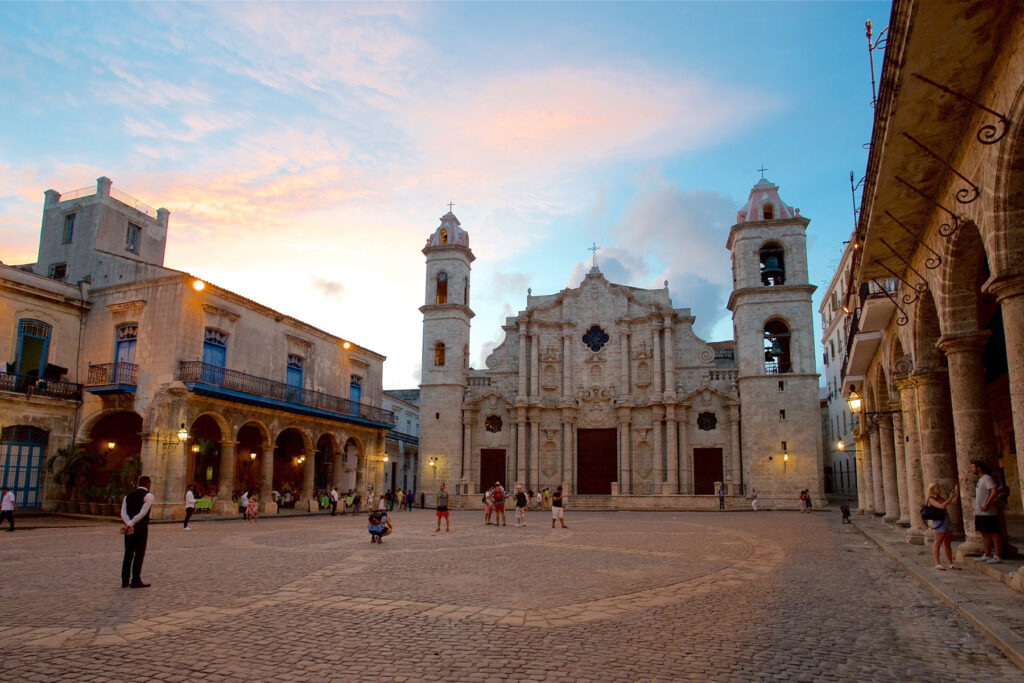
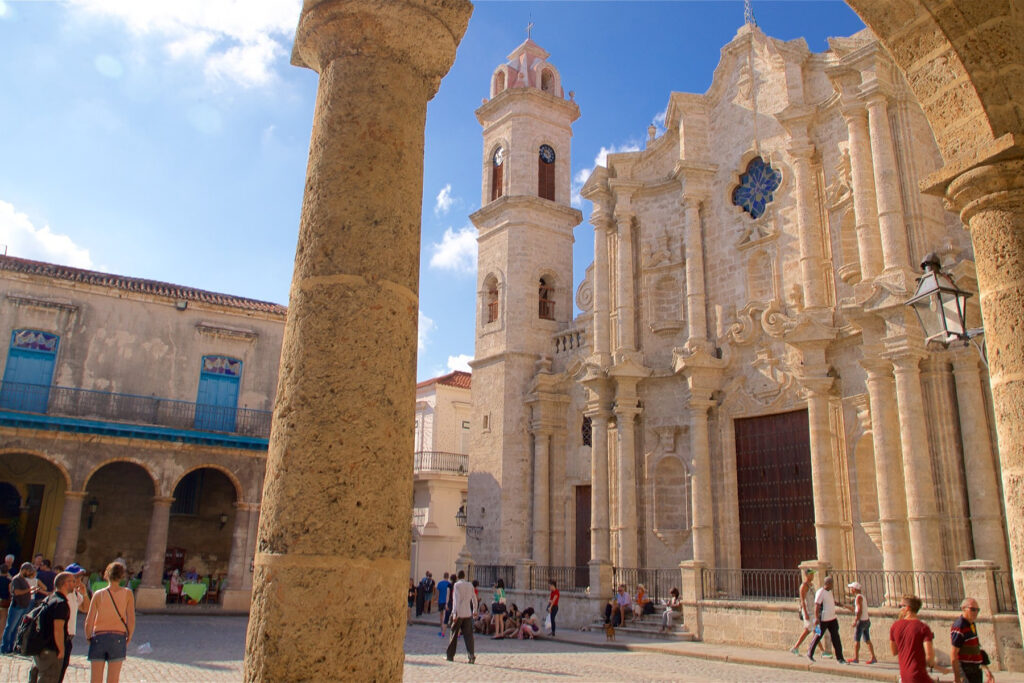
The square is surrounded by colonial buildings with wrought-iron balconies and is a popular place to enjoy Cuban food and music. Don't miss the opportunity to take a photo in front of the cathedral or just enjoy the relaxed atmosphere of the square while watching the local artists.
Some of the most outstanding buildings in this square, in addition to the San Cristóbal de La Habana Cathedral, are: the Palace of the Marquises of Aguas Claras, the Palace of the Count of Lombillo, the Palace of the Marqués de Arcos, the Palace of the Condes de Casa Bayona, where the Colonial Art Museum is currently housed; and the Wifredo Lam Center, a small museum and gallery dedicated to Wifredo Lam, one of the most recognized modern Cuban artists. In the surroundings and near the Plaza is the famous Bodeguita del Medio, where you cannot stop having a mojito.
In summary, the four colonial squares of Old Havana are an essential place to visit on your next trip to Cuba. Each has its own history and charm, and are a showcase of the city's rich history and culture. Do not miss the opportunity to explore these beautiful squares and immerse yourself in the vibrant and welcoming atmosphere of Old Havana. If you are planning a trip to Cuba, you can practice different types of tourism.
And if you would like to stay near these colonial squares to be able to walk around Old Havana, we have a lot of cool little houses for you 😉 take a look at this link:
Find us in

